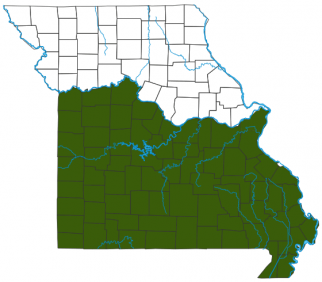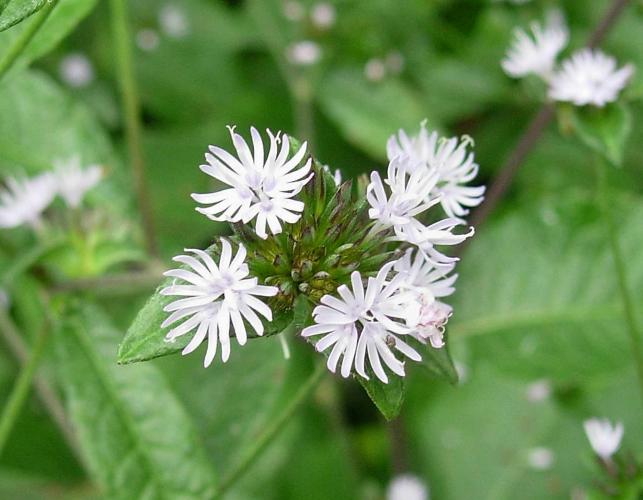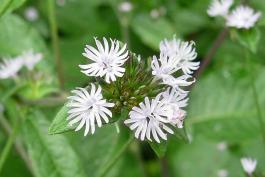
Elephant's foot is a much-forked, stout, shrublike plant bearing flat clusters of light lavender to white flowers. Flowerheads are composites that have only disk florets, with no ray florets. Each flowerhead contains many small clusters with only 2 to 5 florets, subtended by a few leaflike bracts to about 1 inch long. This makes the genus an unusual member of the sunflower family. Blooms August–October. Leaves scattered along stems, alternate, oval, obliquely toothed, the lower ones narrowed rather abruptly at the base, the upper ones normally sessile (stalkless) and quite small.
This plant looks very similar to the closely related ironweeds (Vernonia). Unlike them, elephant’s foot has its primary flowerheads grouped together into dense, headlike clusters. Ironweeds have separate flowerheads that are not grouped into such secondary clusters.

Habitat and Conservation
Human Connections
Ecosystem Connections

























